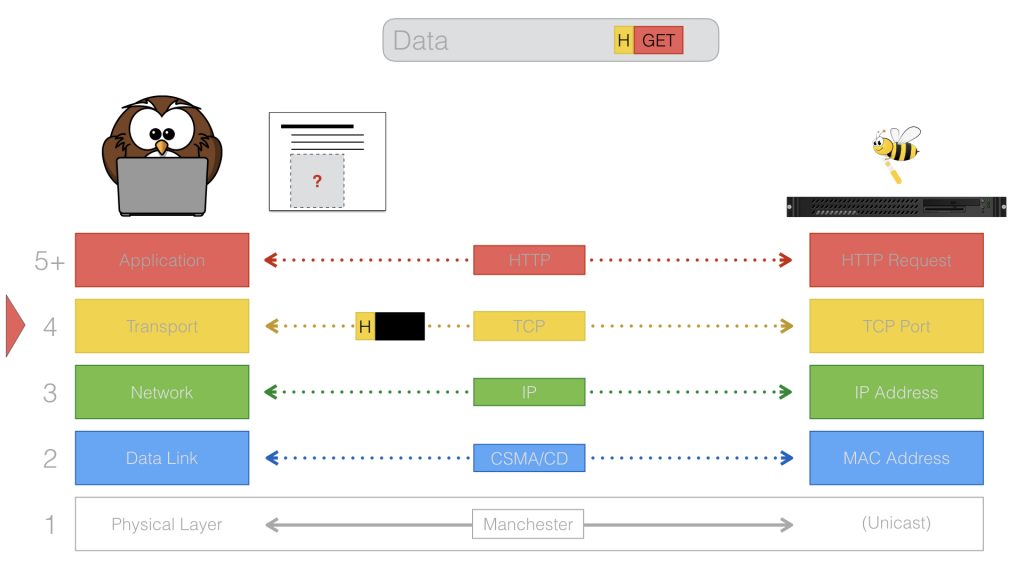On Wednesday 08.07.2020 we held the pre-course meeting for the iLab courses of the upcoming winter semester 2020/2021 at TUM. We are happy about the
Today at 10 am we had our iLabX kickoff! It was big fun today already with our 12 highly motivated students! We are looking forward
You enjoy(ed) our iLabX Massive Open Online Course? You loved going through the different exercises in the vLab but wished there were more of them?
While Layers 2 and 3 allow addressing of hosts (directly connected or located anywhere in the Internet), the Transport Layer addresses applications on a host,
Layer 2 only allows communication between directly connected hosts. Only with the help of the Network Layer communication over multiple hops becomes possible. The following
Layer 2, called the Data Link Layer, is responsible for exchanging data via so called frames between two directly connected hosts. On sending Layer 2
Layer 1, also referred to as Physical Layer, is the lowest layer of the vLab model: It forms the link between networking hardware and the
Historically two major layered network architectures emerged as reference models known today: The ISO/OSI and the TCP/IP models. The TCP/IP model was the first approach
Today we had our iLabX block course kickoff meeting at TUM. As two were missing, we currently have 12 students and can accept 14. Good
Learning how the Internet really works On June 24, 2019, Technical University of Munich (TUM) released its new Massive Open Online Course (MOOC) “iLabX –









